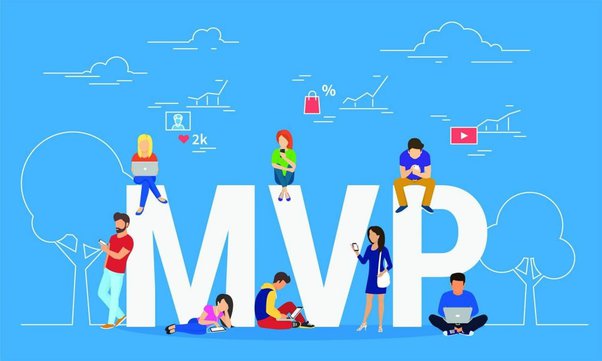Introduction
Finding the right office chair is essential for maintaining comfort and productivity throughout the workday. Whether you run a business, work from home, or manage a corporate office, investing in high-quality office chairs can make a significant difference. Kursikantorjakarta.id is the go-to solution for anyone looking for premium office chairs in Jakarta. Offering a wide range of ergonomic, stylish, and durable seating options, this platform ensures that businesses and individuals get the best value for their investment.
With countless options available on the market, choosing the perfect office chair can be overwhelming. Kursikantorjakarta.id simplifies the process by providing expert recommendations, competitive prices, and a seamless shopping experience. If you’re searching for the best office chairs in Jakarta, here’s everything you need to know about why Kursikantorjakarta.id should be your top choice.
Why Choose Kursikantorjakarta.id for Office Chairs?
1. Extensive Collection of High-Quality Office Chairs
Kursikantorjakarta.id offers a diverse range of office chairs tailored to different needs and preferences. Whether you need an ergonomic chair for better posture, an executive chair for a professional look, or a budget-friendly option for a startup, you’ll find the perfect match.
Some of the most popular chair categories available include:
- Ergonomic Chairs: Designed for long working hours with lumbar support and adjustable features
- Executive Chairs: Luxurious and stylish chairs for a professional office environment
- Mesh Chairs: Breathable and comfortable seating with a modern design
- Visitor Chairs: Perfect for office reception areas and guest seating
- Conference Chairs: Ideal for meeting rooms and collaborative spaces
2. Ergonomic Designs for Maximum Comfort
Sitting for extended periods can lead to back pain, neck strain, and poor posture. Kursikantorjakarta.id specializes in ergonomic office chairs that provide optimal support and comfort. Features like adjustable armrests, lumbar support, and reclining mechanisms ensure a healthier sitting experience.
Key benefits of ergonomic chairs include:
- Better posture support to reduce the risk of back and neck pain
- Increased productivity due to enhanced comfort and reduced fatigue
- Adjustable features to suit different body types and preferences
3. Affordable Prices Without Compromising Quality
One of the biggest concerns when buying office furniture is the cost. Kursikantorjakarta.id offers competitive prices, making it easy to find high-quality chairs that fit any budget. Whether you’re looking for affordable office seating or premium executive chairs, you’ll get the best value for your money.
4. Trusted by Businesses and Professionals in Jakarta
Many businesses, startups, and professionals in Jakarta rely on Kursikantorjakarta.id for their office furniture needs. The company has built a strong reputation for providing durable and stylish office chairs that meet industry standards.
5. Easy Online Shopping and Delivery Services
Buying office chairs has never been easier. Kursikantorjakarta.id offers a seamless online shopping experience with clear product descriptions, detailed specifications, and customer reviews. Additionally, the platform provides reliable delivery services across Jakarta, ensuring that customers receive their orders on time.
How to Choose the Right Office Chair for Your Needs
Selecting the best office chair depends on several factors. Here’s a simple guide to help you make the right choice:
1. Consider Ergonomic Features
Look for chairs with:
- Adjustable seat height for proper alignment with your desk
- Lumbar support to maintain a healthy posture
- Breathable materials like mesh for better airflow
- Tilt and recline functions for flexibility and comfort
2. Match the Chair to Your Work Style
- For long hours at a desk: Choose an ergonomic chair with proper back support
- For executive offices: Opt for a high-back leather or cushioned executive chair
- For meetings and conferences: Use lightweight and stackable chairs for convenience
3. Check Durability and Material Quality
A good office chair should be made of high-quality materials to ensure longevity. Kursikantorjakarta.id provides chairs with strong frames, premium upholstery, and durable wheels for long-term use.
4. Set a Budget
Determine how much you’re willing to spend and explore options within that range. Kursikantorjakarta.id offers budget-friendly and high-end options to suit all financial plans.
Customer Reviews and Testimonials
Many customers in Jakarta have shared positive experiences with Kursikantorjakarta.id. Here are some common praises:
- “The best place to buy office chairs! The ergonomic chair I purchased has significantly improved my posture.”
- “Fast delivery and excellent customer service. Highly recommended for businesses looking for office furniture.”
- “Great quality at an affordable price. I will definitely shop again!”
Frequently Asked Questions (FAQ)
1. Does Kursikantorjakarta.id offer a warranty on office chairs?
Yes, most office chairs come with a warranty, depending on the model and manufacturer. Check product details for specific warranty terms.
2. Can I try the chairs before purchasing?
Kursikantorjakarta.id primarily operates online, but you can contact customer service to inquire about showroom availability.
3. Do they provide bulk orders for offices?
Yes, Kursikantorjakarta.id offers bulk purchasing options with potential discounts for businesses and corporate offices.
4. What payment methods are available?
The platform supports various payment methods, including bank transfers, credit/debit cards, and digital wallets.
5. How long does delivery take?
Delivery time depends on your location within Jakarta, but most orders arrive within a few days.
Conclusion
When it comes to high-quality office chairs in Jakarta, Kursikantorjakarta.id is the ultimate solution. With a wide selection of ergonomic, stylish, and affordable options, this platform ensures that every customer finds the perfect chair for their needs. Whether you’re upgrading your home office or furnishing an entire workplace, you can rely on Kursikantorjakarta.id for top-tier products and excellent customer service.












